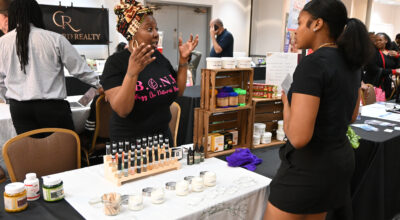Carl Blankenship: Pollen and prejudice make their return
Published 12:00 am Tuesday, April 20, 2021
‘Tis the season for the greater Piedmont to transform into a green-tinted pollenscape thanks to the wonders of plant reproduction.
It is the least wonderful time of the year for those most desperate to keep their cars clean and the 10-30% of us who are victims of hay fever and trying to stave off the symptoms brought to us by all the plant dust flying around. I’m a life-long allergy sufferer and someone who spent most of the past decade thriving in the crisp mountain air away from my native Kernersville.
Antihistamines have worked their way back into my day-to-day more often since I moved to Salisbury, but I can’t avoid allergies no matter where I go. I am allergic to almost every other animal on the planet. When I rescued my pair of guinea pigs from a local shelter while living in Avery County, I had to step up my counter-measures.
I took a bit of professional interest in pollen while I was still working as a reporter in the mountains. It was one of those great intersections of professional news gathering and personal experience that lead me to two unexpected truths about the nature of mass immune system malfunctioning this time of year:
- The fresh pollen on your windshield in the morning is probably not the stuff making you sneeze and leading you into a fresh sinus infection.
- My allergies were always mild in the mountains, but your mileage may vary.
The main culprit of all the green stuff is wind-pollinating trees. According to the biology and agriculture experts I spoke to at the time, the loblolly pine is the main culprit.
Loblolly pine is the most frequently commercially grown tree in the area, and the useful lumber is ubiquitous in construction.
Plant biologist and Catawba College department chair Jay Bolin told me there are other pines producing pollen as well and wind-pollinated plants in general make copious amounts of the stuff compared to flowering plants.
“The reason why right now we’re just getting this epic pollen dump is because the weather has been so dry,” Bolin told me on Friday.
Bolin said pollen strobili, the cone-shaped pods of the stuff, start releasing their contents when they dry out. Wet weather limits how much pollen can travel and washes it away.
Bolin pointed to honeysuckle as an example of a plant that does not produce much pollen because it does not need to. Those plants are precisely pollinated by hummingbirds. For plants depending on the wind to move their genetics, they have to take a macro approach.
“It’s just a numbers game,” Bolin said.
Wind-pollinating commercial trees like pine and maple are pumping out the most visible stuff, but they probably aren’t what’s giving you a stuffy nose. That could be because of the large particulate size of pine pollen. An allergist I spoke to two years ago told me his clinic stopped testing for pine allergies.
The reality is that, while our ponds are green, you are more likely being affected by the smaller, less visible airborne pollen producers like grasses. I suffer more from plants in this area, but you may take a walk in a quaint mountain meadow full of wild grasses and regret it.
Carl Blankenship is a reporter for the Salisbury Post.






